Abstract
Biological products have been widely used in media intended for the primary isolation of Neisseria gonorrhoeae. Most of these substances are expensive and, in some places, difficult to procure. Ascitic fluid, which has been extensively used, is becoming increasingly rare. On the other hand, attempts to replace these biological substances by chemical compounds have met with little success, and a satisfactory synthetic medium does not exist. The authors describe the laboratory preparation of a reproducible medium which does not contain any fresh biological substances. It was developed from a routine “chocolate medium” which contained ascitic fluid and heated horse blood. Experiments with sparsely growing fresh laboratory strains showed that the ascitic fluid could be replaced by a combination of yeast and liver autolysates and the horse blood by haemoglobin. This Haemoglobin-Yeast-Liver (HYL) medium proved to be well suited for the primary isolation of N. gonorrhoeae and preliminary experiments indicated that it might also be suitable for use as a reference medium in sensitivity determinations. Attempts to use yeast and liver autolysates to replace ascitic fluid in a fermentation medium which did not contain blood or haemoglobin were less successful. Germination on the modified medium was relatively poor and it seems that the addition of a protective agent, such as albumin or starch, will be necessary.
Full text
PDF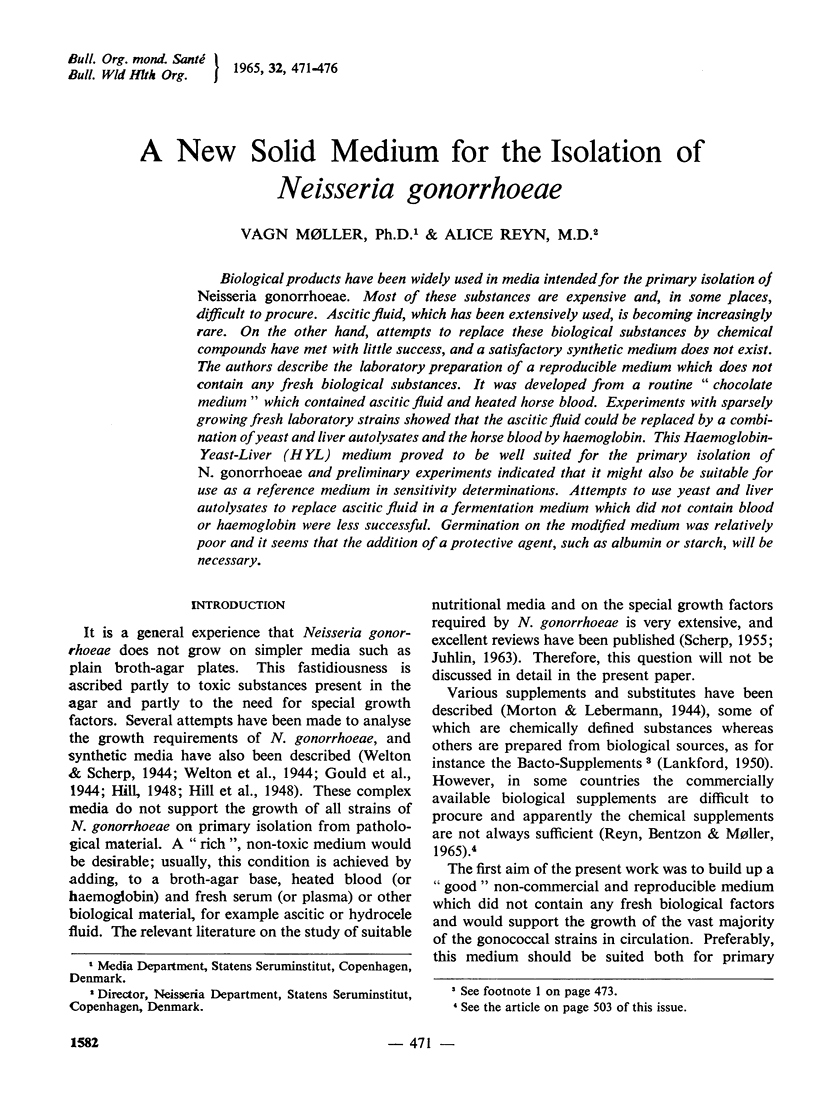
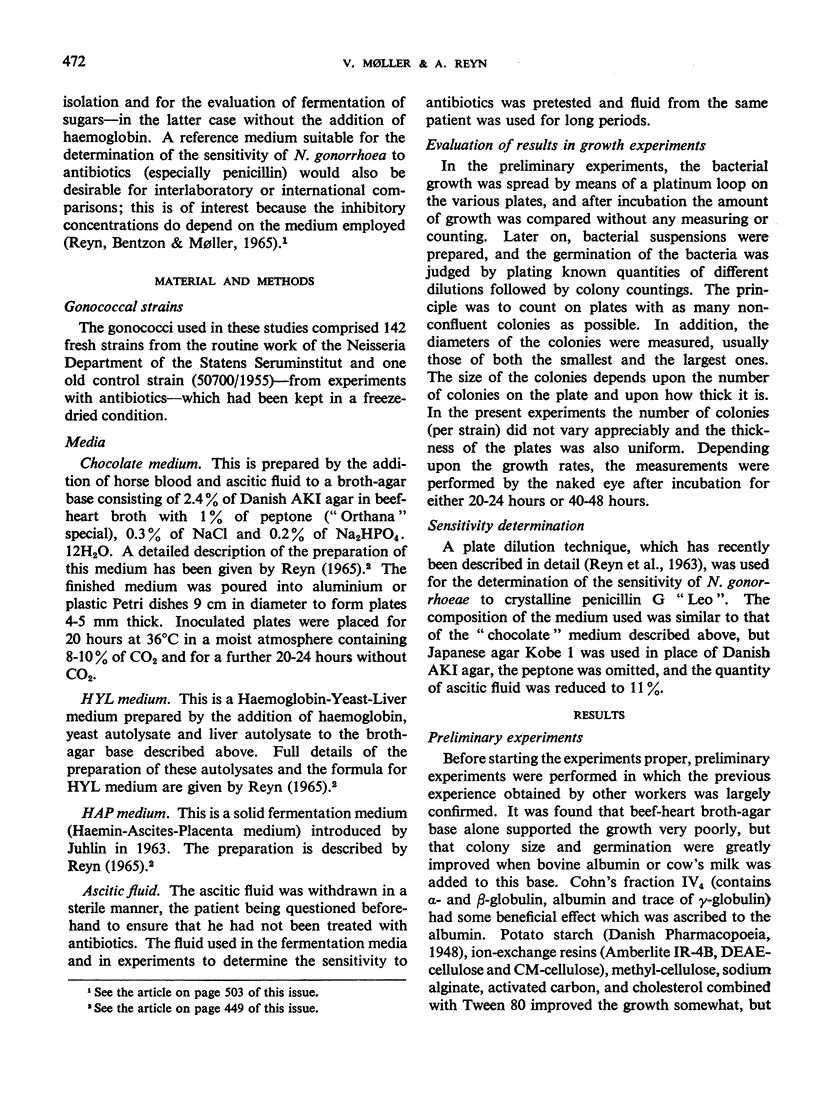
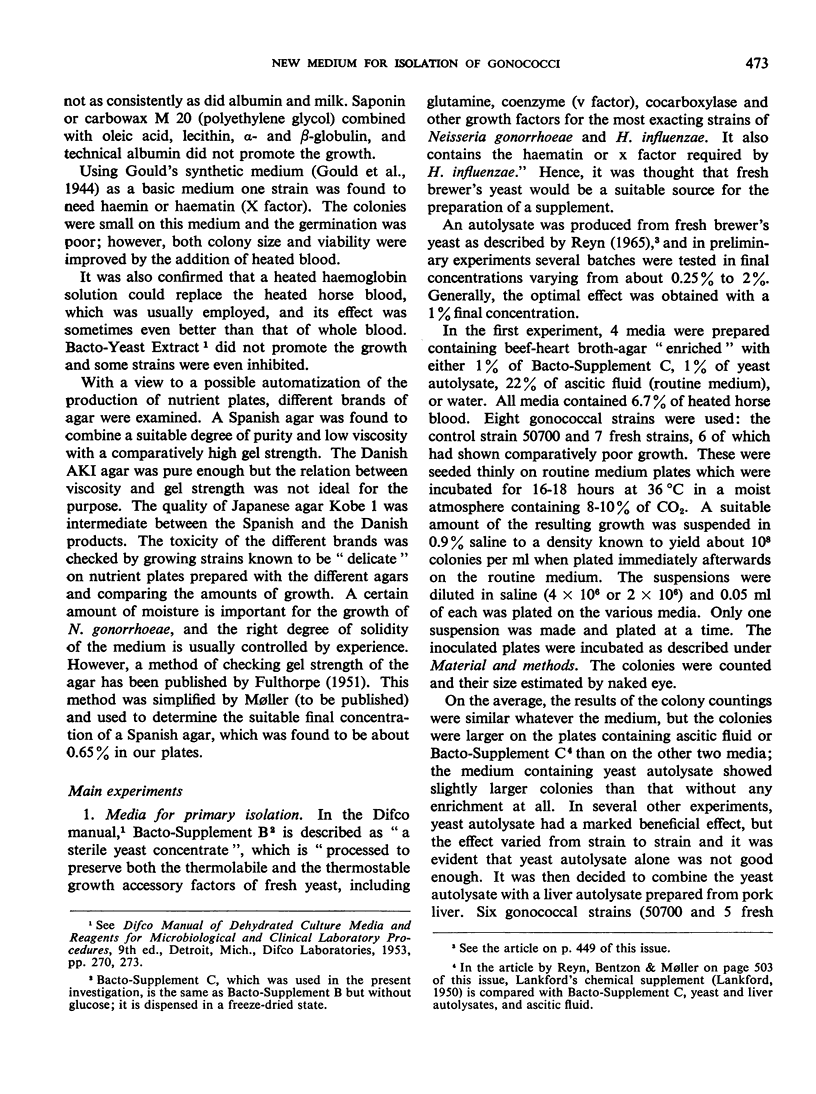
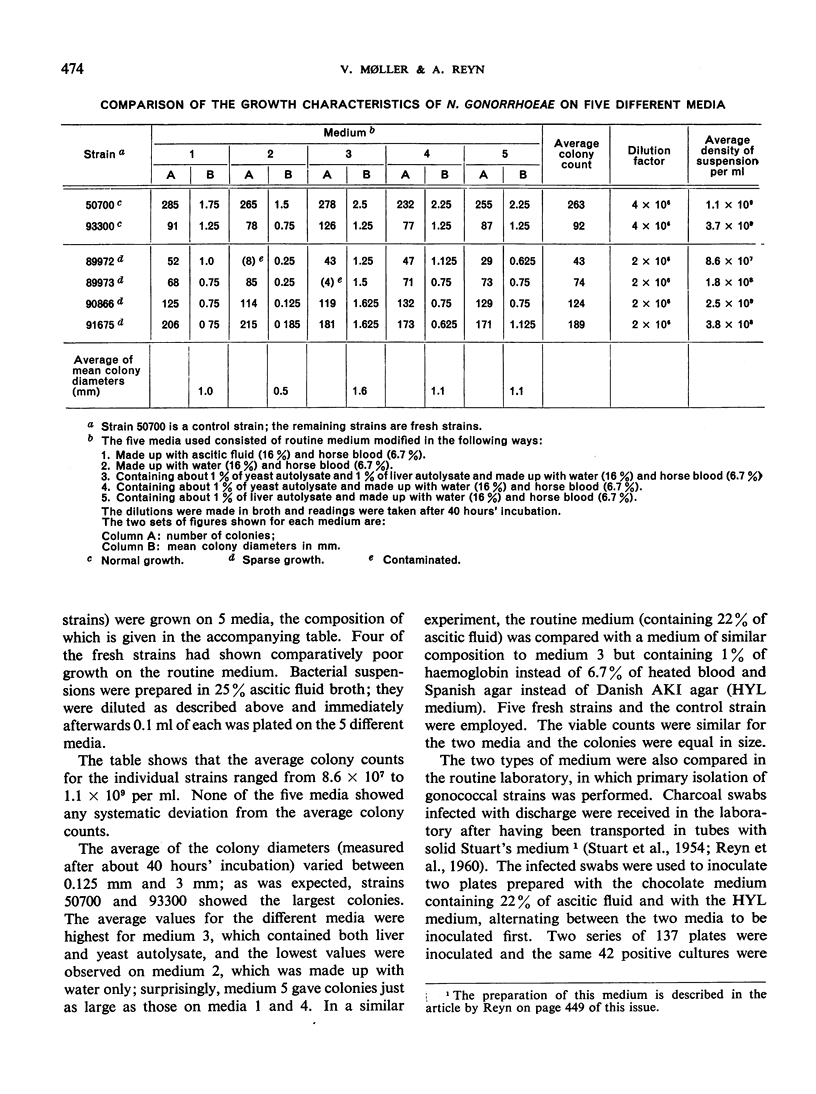
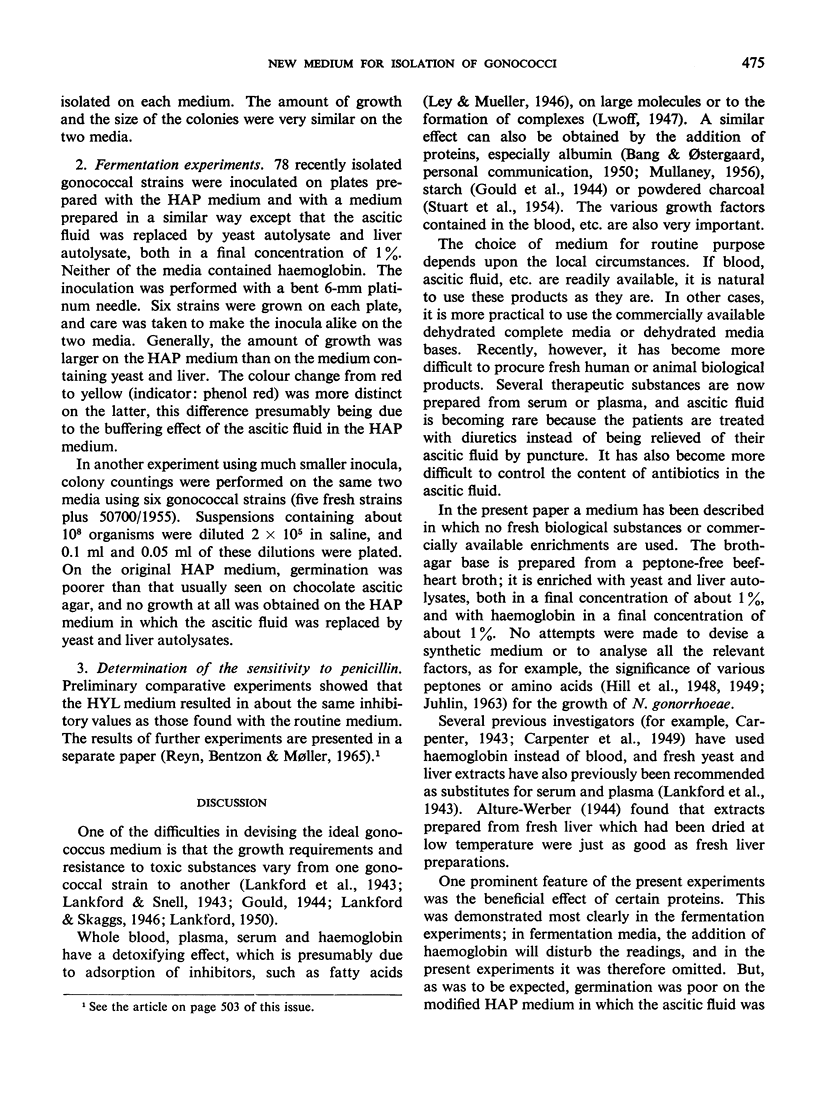
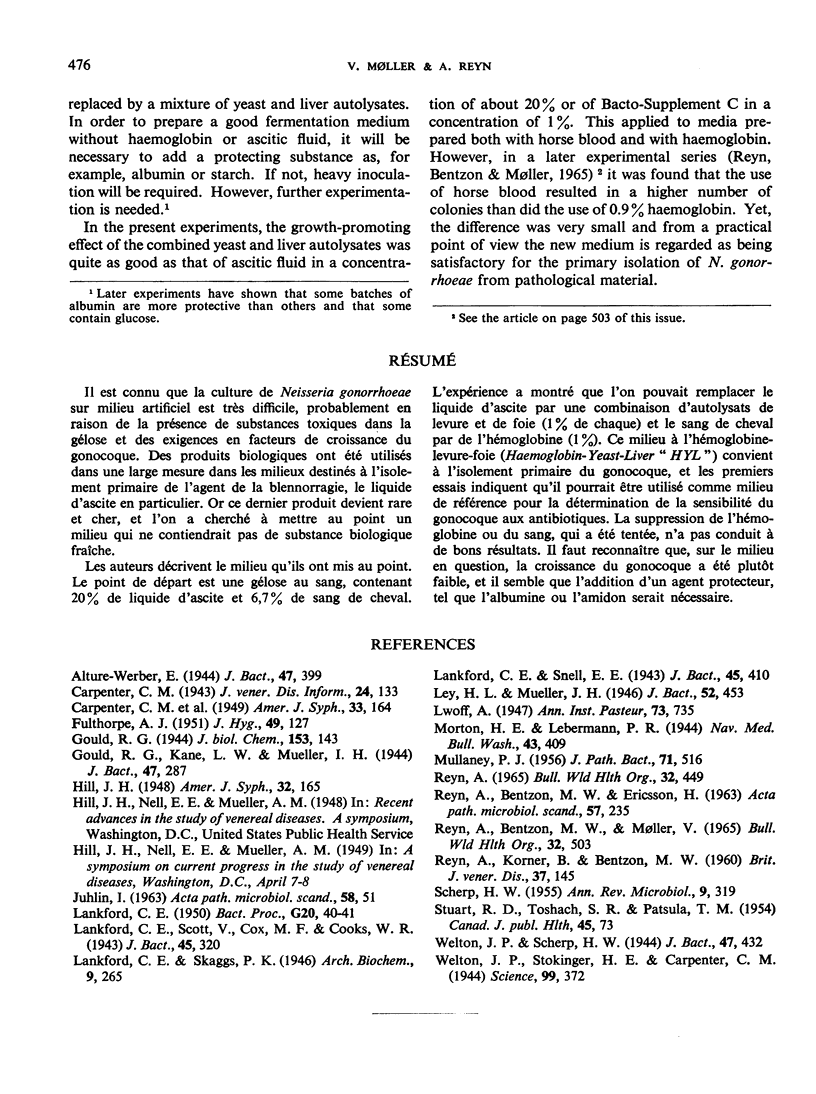
Selected References
These references are in PubMed. This may not be the complete list of references from this article.
- Alture-Werber E. Use of Liver Extract as an Enrichment Factor for the Growth of Gonococci. J Bacteriol. 1944 Apr;47(4):399–400. doi: 10.1128/jb.47.4.399-400.1944. [DOI] [PMC free article] [PubMed] [Google Scholar]
- CARPENTER C. M., BUCCA M. A. Evaluation of 12 media for the isolation of the gonococcus. Am J Syph Gonorrhea Vener Dis. 1949 Mar;33(2):164–176. [PubMed] [Google Scholar]
- FULTHORPE A. J. The variability in gel-producing properties of commercial agar and its influence on bacterial growth. J Hyg (Lond) 1951 Jun-Sep;49(2-3):127–139. doi: 10.1017/s0022172400044028. [DOI] [PMC free article] [PubMed] [Google Scholar]
- Gould R. G., Kane L. W., Mueller J. H. On the Growth Requirements of Neisseria Gonorrhoeae. J Bacteriol. 1944 Mar;47(3):287–292. doi: 10.1128/jb.47.3.287-292.1944. [DOI] [PMC free article] [PubMed] [Google Scholar]
- Lankford C. E., Snell E. E. Glutamine as a Growth Factor for Certain Strains of Neisseria Gonorrhoeae. J Bacteriol. 1943 Apr;45(4):410–411. doi: 10.1128/jb.45.4.410-411.1943. [DOI] [PMC free article] [PubMed] [Google Scholar]
- Ley H. L., Jr, Mueller J. H. On the Isolation from Agar of an Inhibitor for Neisseria gonorrhoeae. J Bacteriol. 1946 Oct;52(4):453–460. doi: 10.1128/jb.52.4.453-460.1946. [DOI] [PMC free article] [PubMed] [Google Scholar]
- MULLANEY P. J. A simple fermentation medium for Neisseria gonorrhoeae. J Pathol Bacteriol. 1956 Apr;71(2):516–517. doi: 10.1002/path.1700710226. [DOI] [PubMed] [Google Scholar]
- REYN A., BENTZON M. W., ERICSSON H. Comparative investigations of the sensitivity of N. gonorrhoeae to penicillin. Acta Pathol Microbiol Scand. 1963;57:235–255. doi: 10.1111/j.1699-0463.1963.tb03447.x. [DOI] [PubMed] [Google Scholar]
- REYN A. LABORATORY DIAGNOSIS OF GONOCOCCAL INFECTIONS. Bull World Health Organ. 1965;32:449–469. [PMC free article] [PubMed] [Google Scholar]
- REYN A. Sensitivity of N. gonorrhoeae to antibiotics. Br J Vener Dis. 1961 Jun;37:145–157. doi: 10.1136/sti.37.2.145. [DOI] [PMC free article] [PubMed] [Google Scholar]
- SCHERP H. W. Neisseria and neisserial infections. Annu Rev Microbiol. 1955;9:319–334. doi: 10.1146/annurev.mi.09.100155.001535. [DOI] [PubMed] [Google Scholar]
- STUART R. D., TOSHACH S. R., PATSULA T. M. The problem of transport of specimens for culture of Gonococci. Can J Public Health. 1954 Feb;45(2):73–83. [PubMed] [Google Scholar]
- Welton J. P., Stokinger H. E., Carpenter C. M. A CHEMICALLY DEFINED MEDIUM FOR THE CULTIVATION OF THE GONOCOCCUS. Science. 1944 May 5;99(2575):372–372. doi: 10.1126/science.99.2575.372. [DOI] [PubMed] [Google Scholar]


